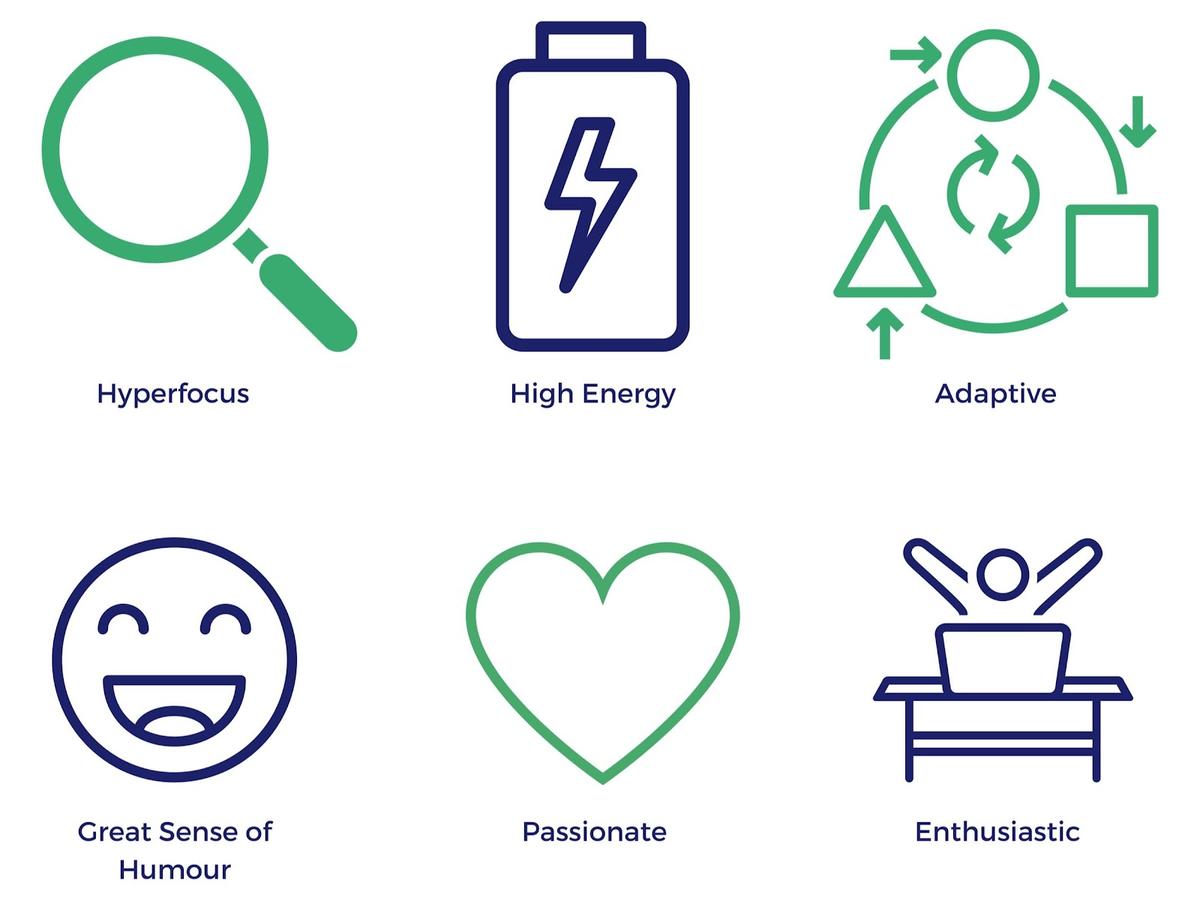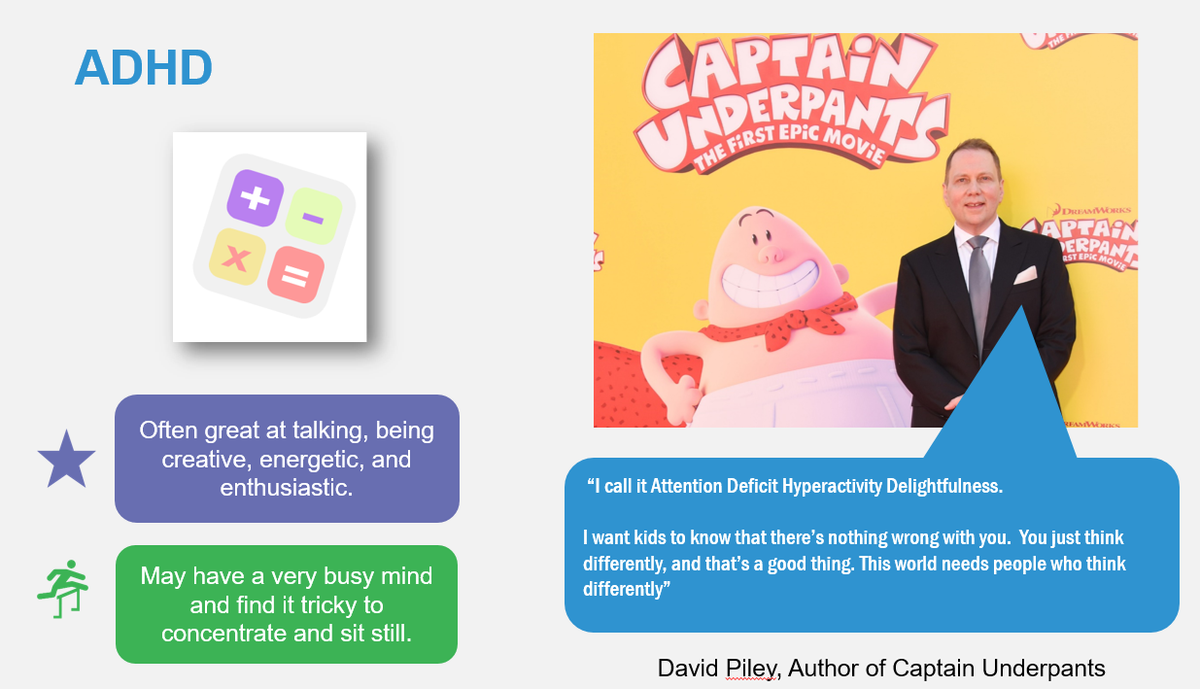Learning Diversity
Vira Pirrotta

Learning Diversity
Vira Pirrotta
What is ADHD?
ADHD is a neurodifference that affects an estimated 5-10% of children and 3-4% of adults worldwide. It is characterised by persistent inattention and/or hyperactivity-impulsivity that interferes with daily functioning.
Research suggests that males are more likely to be diagnosed with ADHD than females, although some studies suggest that this may be due to differences in how ADHD is presented rather than actual prevalence rates.
It is important to note that many individuals with ADHD possess a unique range of strengths and talents.
Attention Deficit Hyperactivity Disorder (ADHD) is a neurodifference that affects both children and adults. It is characterised by inattention, hyperactivity, and impulsivity traits that can impact daily life and a person’s ability to focus. About 4% of the population have ADHD. People with ADHD can be some of the most creative members of a team, bringing energy and new approaches to their projects. Several studies have shown that adults with ADHD tend to be out-of-the-box thinkers and calm under pressure.
ADHS is a complex neurodifference that can present differently in each individual, making diagnosis and treatment challenging. The exact causes of ADHD are not fully understood, but research suggests that a combination of genetic and environmental factors may contribute to its development. While ADHD is often diagnosed in childhood, it can also persist into adulthood and may go undiagnosed in many individuals. The impact of ADHD on academic, social, and professional life can be significant, highlighting the need for early identification and appropriate support.
Common Strengths Associated with ADHD


Many people with ADHD possess unique skills. These skills vary from person to person but commonly include the ability to hyperfocus, adapt to different situations, have a great sense of humour, and be enthusiastic.
Managing Traits of ADHD
There are several strategies we can use to manage traits associated with ADHD. Ultimately, it is down to the individual’s decision on how they choose to manage their ADHD. Still, some common examples include:


As a continuation of understanding Nueorversity, we will look at Autism Spectrum Condition (ASC) next week.


Welcome to another SPS Speech Box for 2024. This Speech Box discusses visual schedules and how they can be used at home to support your child’s development. Feel free to include it in your next school newsletter.
Using visual schedules at home
Visual schedules can be incredibly beneficial for children, especially when it comes to supporting their daily routines. A visual schedule is made up of pictures or words showing a sequence of events to be completed. It could be a schedule for getting ready for school in the morning, completing after-school activities, like homework and swimming lessons, or a weekly schedule showing what will happen across the week. There are several advantages to using a visual schedule in your home:
Independence:
Predictability
Flexibility
Language and literacy development
Visual schedules can be created at home by:
Visual schedules can be as complex or as simple as your child and your family needs them to be. They can add stability to your everyday life, even when you feel like you are rushing around!
If you would like further information, please contact the SPS Speech Pathologist at your school.
Kind regards,
Mala Ferdinando
Speech Pathology for Schools

